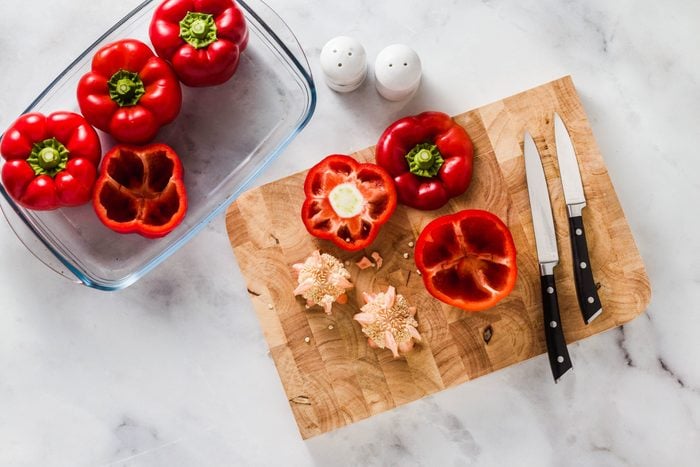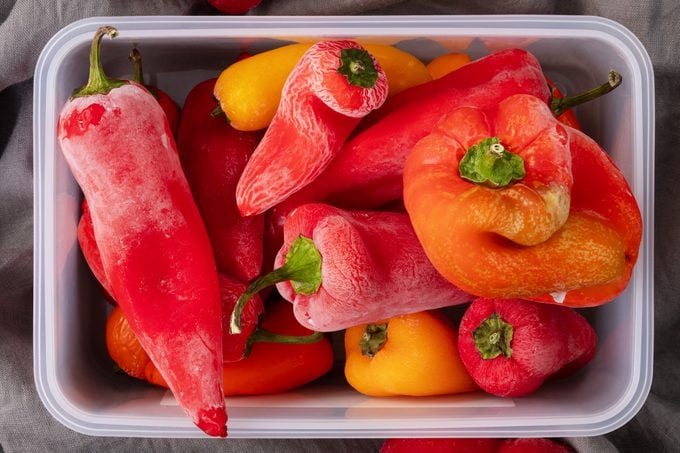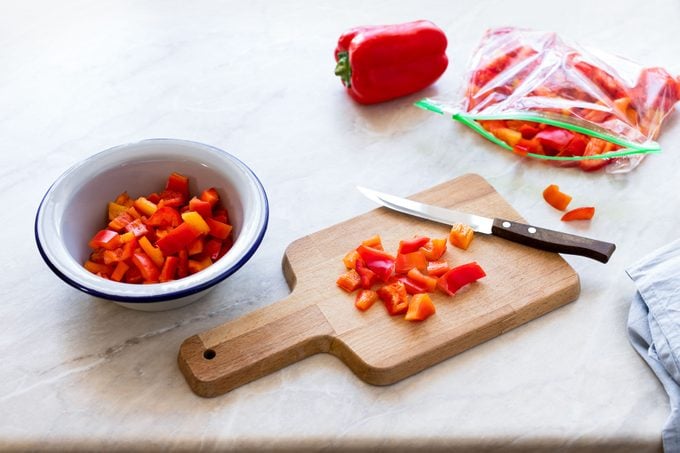How to Freeze Peppers When You Buy in Bulk
Updated: Apr. 02, 2024

Learn how to freeze peppers and you'll never have to waste your harvest again. Find tips on freezing whole and cut peppers, plus how to use them once thawed.
I’m guilty of buying more peppers than I need, especially when they’re on sale and the deal is just too good. I’m also the one tossing uneaten, rotten peppers in the trash a week later. So much for savings! I finally got smart and learned how to freeze peppers. This guide works for peppers of all kinds, from sweet bells to the spiciest jalapenos and habaneros.
The USDA states that freezing fresh produce does not destroy nutrients, so rest assured your frozen peppers will still be high in vitamin C. You’ll want to add peppers to your list of frozen produce you should always have on hand.
The Best Way to Freeze Peppers

Unlike other vegetables like asparagus and broccoli that require blanching—a process that involves steaming or boiling vegetables briefly to partially cook them—peppers require no special treatment. All peppers, from the spiciest to the sweetest, can be frozen. Smaller varieties like habanero and jalapeno are best frozen whole while larger ones like bells can be sliced or kept whole depending on how you want to use them later.
Prior to freezing, all peppers should be firm and vibrant in color. You want to freeze produce when it’s at peak flavor and ripeness. Once you’ve looked them over, give them a good scrub with a vegetable brush beneath running water. With a clean dish towel, dry them well to prevent freezer burn.
How to freeze whole peppers
My jalapeno plants are prolific producers, making them impossible to consume before they rot. Freezing them is the perfect way to ensure I have hot peppers for salsas all winter long. Simply leave them whole, tops and all, and place them in a single layer in a freezer-safe resealable bag. Be sure to label the bag with the date and the variety. Once full, lay the bag flat in the freezer to avoid clumping. This method works for all small peppers, both sweet and spicy.
For bell peppers, slice the tops off to remove the core and seeds. Wrap each bell pepper individually in plastic wrap. Place the wrapped peppers on a baking sheet and place in the freezer for at least one hour. Once frozen, transfer the peppers to freezer bags, removing as much air as possible. Label and date the bags and return them to the freezer.
How to freeze cut peppers

Whether you chop or slice them, the process for freezing peppers is the same. Just be sure to remove stems, cores and seeds. On a baking sheet lined with parchment, lay your pepper pieces in a single layer. Freeze them for at least an hour before transferring to resealable freezer bags. Remove as much air as possible from the bags and label and date them before returning the peppers to the freezer.
How long do frozen peppers last?
For best quality and highest nutrient retention, frozen peppers should be eaten within six to eight months.
How to Thaw Frozen Peppers
To defrost frozen peppers, place them in the refrigerator. If you’re short on time and need them sooner, place the peppers (bag and all) in a bowl of cool water. Once they’re soft to the touch, they’re ready to use.
How to Use Frozen Peppers
Peppers lose their crispy crunch after being frozen, so they work best in cooked recipes. Despite the texture change, they still pack a peppery punch. Add thawed peppers to soups, sauces, salsas, casseroles and other bell pepper recipes. For something fun and unique, try this easy hot pepper jelly on crackers with cream cheese.
